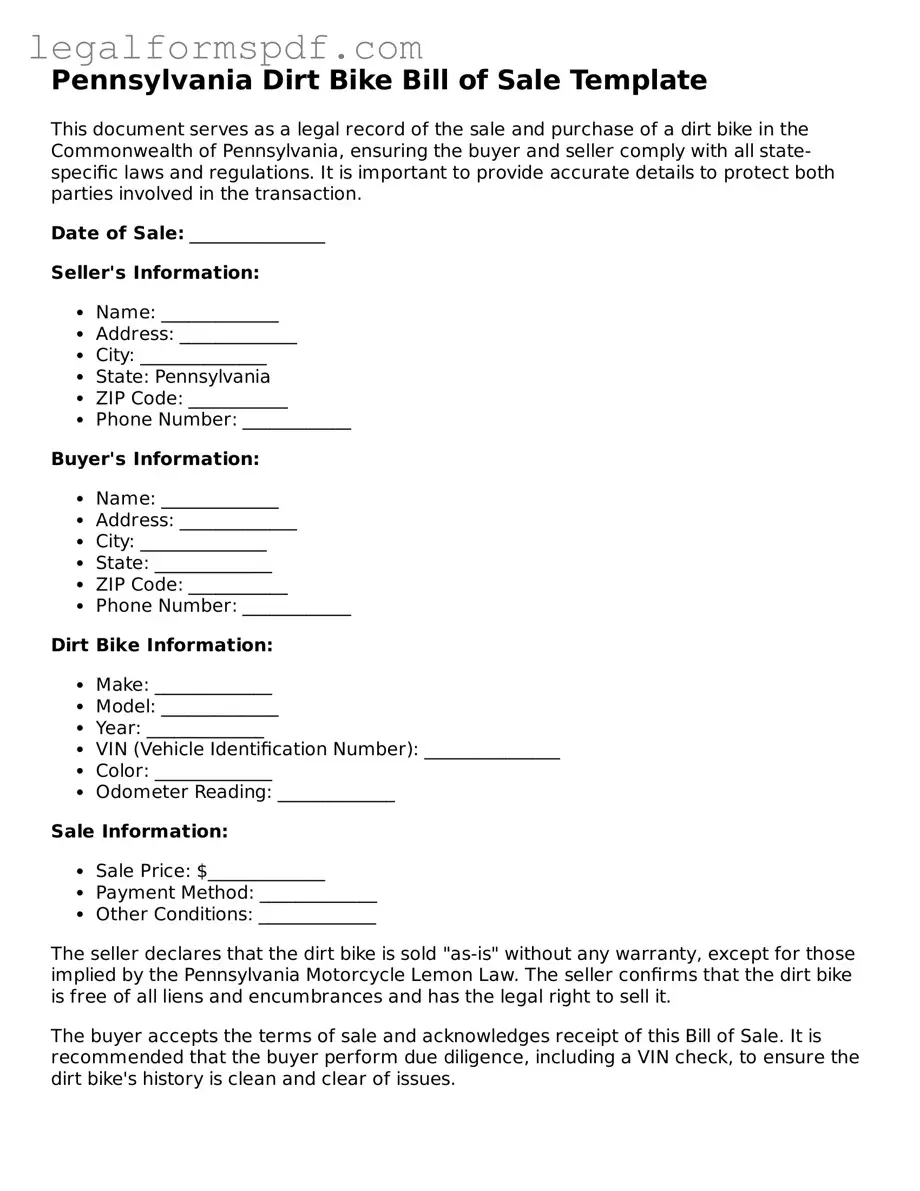When filling out the Pennsylvania Dirt Bike Bill of Sale form, many find themselves tangled in avoidable mistakes. A common oversight is neglecting to verify the accuracy of personal information. This includes typos in names, addresses, or ID numbers. Such errors, seemingly minor, can lead to significant complications in proving ownership or in future dealings with registration and legal processes.
Another frequently encountered issue is the failure to specify the dirt bike's make, model, and year accurately. This can create problems in the identification of the vehicle, particularly if there's ever a dispute about the sale or if the bike is stolen. Precision in these details ensures a smoother transaction and legal recognition of the sale.
Many individuals also forget to include the vehicle identification number (VIN) or mistakenly enter it. The VIN is a crucial element for the legality of the sale, necessary for registration, and essential for identifying the bike's history. An incorrect VIN can invalidate the bill of sale and potentially implicate legal troubles, especially if the bike has a questionable history.
An often overlooked aspect is the agreement on terms relating to warranties or "as is" status of the sale. Some sellers or buyers leave this section blank, assuming it to be unimportant. However, specifying these terms clearly can protect both parties from future disputes over the condition of the dirt bike at the time of sale.
Also, it’s not uncommon for people to skip the witness or notary section. While not always mandatory, having a bill of sale witnessed or notarized can add an extra layer of authenticity and legal protection. It serves as a credible verification of the transaction, especially in cases where the sale is contested.
The date of the sale is another detail that occasionally gets mishandled. Either it’s inaccurately recorded, or worse, omitted. This can complicate matters if any legal issue arises post-sale, requiring proof of when the transaction took place. Accurate dating ensures a clear timeline of ownership transfer.
Signatures are the keystone of the document's legality, yet, ironically, errors occur here too. Parties may forget to sign, use inconsistent signatures compared to other legal documents, or one party might not be present to sign. Every signature on the bill of sale must match official identification to validate the agreement.
It’s also not uncommon for the seller to omit disclosing any liens on the dirt bike. This transparency is crucial as it informs the buyer of any existing financial claims on the vehicle. Failure to disclose this information can lead to legal complications and financial liabilities for the new owner.
A practical but often ignored step is making copies of the bill of sale. Once the form is filled out and signed, both the buyer and seller should keep copies for their records. Not doing so leaves both parties without easy proof of the transaction, complicating any future claims or disputes.
Lastly, an error made by both parties is not reviewing the completed form together. This final step can catch any of the previously mentioned mistakes and ensure that all information is accurate and agreed upon. Overlooking this can result in misunderstandings or disputes after the sale, which might have been avoidable with a thorough review.
